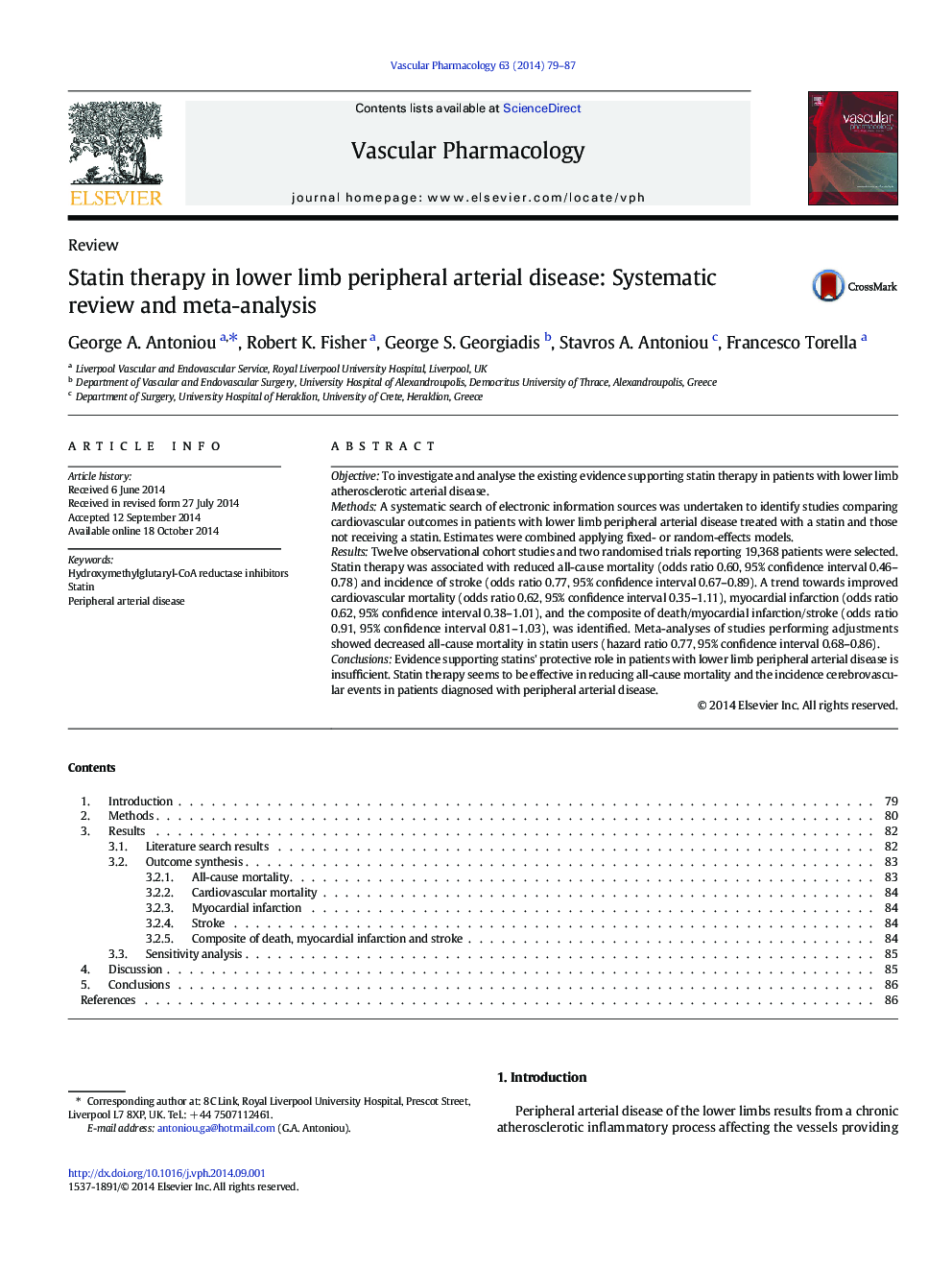| Article ID | Journal | Published Year | Pages | File Type |
|---|---|---|---|---|
| 2574180 | Vascular Pharmacology | 2014 | 9 Pages |
ObjectiveTo investigate and analyse the existing evidence supporting statin therapy in patients with lower limb atherosclerotic arterial disease.MethodsA systematic search of electronic information sources was undertaken to identify studies comparing cardiovascular outcomes in patients with lower limb peripheral arterial disease treated with a statin and those not receiving a statin. Estimates were combined applying fixed- or random-effects models.ResultsTwelve observational cohort studies and two randomised trials reporting 19,368 patients were selected. Statin therapy was associated with reduced all-cause mortality (odds ratio 0.60, 95% confidence interval 0.46–0.78) and incidence of stroke (odds ratio 0.77, 95% confidence interval 0.67–0.89). A trend towards improved cardiovascular mortality (odds ratio 0.62, 95% confidence interval 0.35–1.11), myocardial infarction (odds ratio 0.62, 95% confidence interval 0.38–1.01), and the composite of death/myocardial infarction/stroke (odds ratio 0.91, 95% confidence interval 0.81–1.03), was identified. Meta-analyses of studies performing adjustments showed decreased all-cause mortality in statin users (hazard ratio 0.77, 95% confidence interval 0.68–0.86).ConclusionsEvidence supporting statins' protective role in patients with lower limb peripheral arterial disease is insufficient. Statin therapy seems to be effective in reducing all-cause mortality and the incidence cerebrovascular events in patients diagnosed with peripheral arterial disease.
Graphical abstractFigure optionsDownload full-size imageDownload high-quality image (72 K)Download as PowerPoint slide
